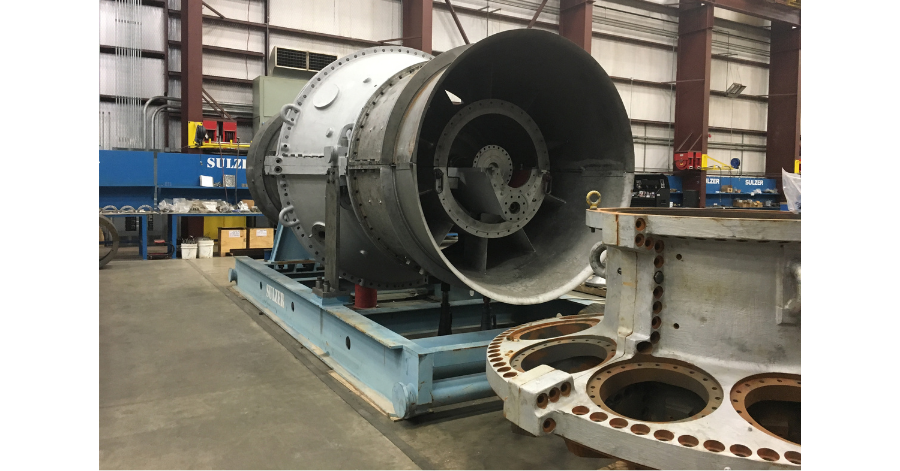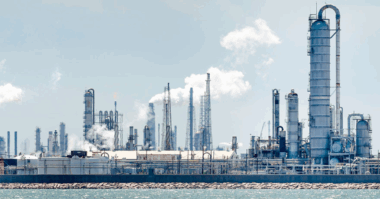Gas turbines are efficient and reliable sources of power that drive generators in national power stations as well as smaller industrial settings. Their flexibility allows them to be brought online to meet increasing demand for electrical energy and their reliability can be assured, providing an effective and well-planned maintenance program is in place.
Campbell Archibald, Sales Director at Alba Power, a Sulzer brand, looks at the importance of engaging experienced maintenance providers that can also deliver repairs and component upgrades.
The popularity of gas turbines across the world as a source of mechanical power emphasizes the efficiency and reliability that can be achieved. The range of designs from aero-derivatives to large-scale power generation units, means that a wide range of applications can be accommodated. Their flexibility is enhanced by the capacity for frequent start/stop operations, but this makes planned inspection and maintenance all the more important, especially in applications with an increased risk of corrosion.
Furthermore, higher operating temperatures and mechanical stresses are creating the need for the use of advanced technology components and refurbishment processes. In general, repair activities consist of the stripping and reapplication of coatings, the rebuilding of the geometry by welding, and the rejuvenation of the material condition through appropriate heat treatments. Advanced refurbishment procedures also include changes in materials, coatings, or designs, which aim to improve performance and lengthen the periods between scheduled maintenance activities.
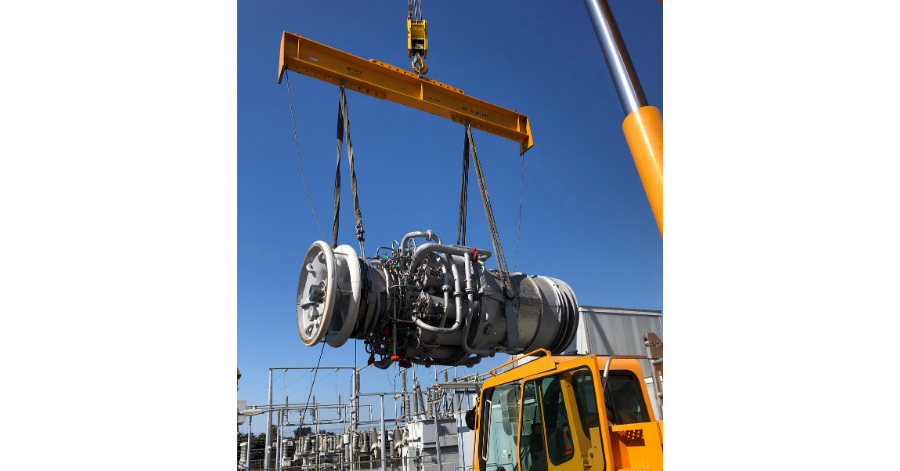
Gas turbines of all sizes require regular maintenance to ensure continued reliability
Assessing serviceability
The basic operating principles of a gas turbine are relatively simple, but the components involved must handle high temperatures and work within very fine tolerances. Highly specialized parts and manufacturing processes are used to create the turbine’s components and these need to be properly maintained to ensure continued efficiency and reliability.
Regular data collection from sensors throughout the installation provides important information on vibration, temperatures, pressures and turbine output. This is collated and assessed to determine any anomalies as part of a serviceability report, which identifies the issues that need to be prioritized and addressed before they can cause significant damage.
Condition based monitoring and recommended maintenance intervals are usually dictated by the original equipment manufacturer (OEM), however, these take a one-size-fits-all approach and may not suit some applications. This is especially true for gas turbines used for peak lopping or as back-up units; assets in these situations can benefit from remote monitoring and bespoke maintenance packages that take less common circumstances into account.
This proactive approach is complemented by upgrading the sensor package to use items such as sonic microphones in the hot gas path to indicate issues with the combustion process. A tailored package offers the best availability of the gas turbine by enabling maintenance and repairs to be completed during scheduled shut-down periods. These also offer the opportunity to install upgrades and improvements that can extend reliability and improve performance.
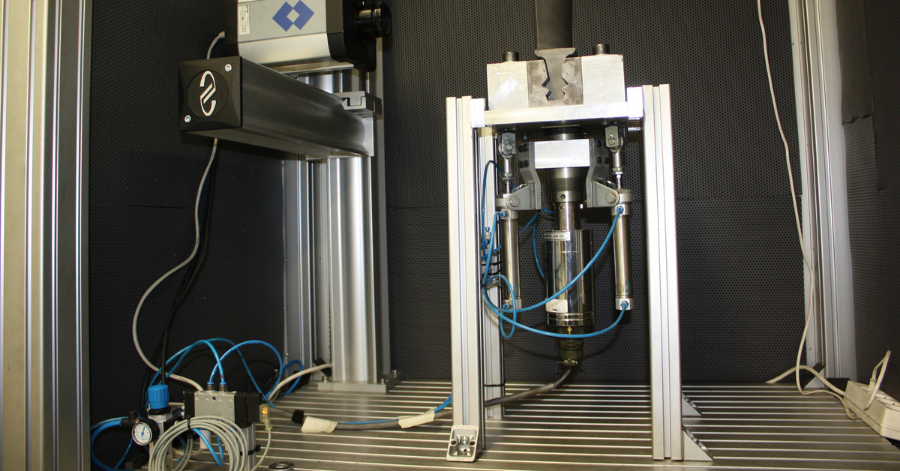
Sophisticated diagnostic tools are required to examine turbine blades
Thermal inspections
At the heart of the gas turbine, hot gas path components require regular inspections since close examination of the individual turbine blades can reveal overheating issues. More obvious defects can be identified by a service engineer using a borescope, but occasionally a more detailed inspection may be required that demands more sophisticated tools.
The use of basic thermographic equipment can identify heat build-up in electrical equipment and bearings by using a passive detection system that relies on thermal radiation being given off by the component under examination. In contrast, active, lock-in thermography uses ultrasonic excitation to introduce energy into the object, such as a turbine blade, and measures its response. If the normally homogeneous material is damaged, some of the wave energy is absorbed and heat is generated, which can be detected by the thermal imaging camera.
Applied to gas turbine components, where effective cooling is essential for extended service life, this technology can show at a glance whether cooling holes are blocked or open. As part of an inspection or a repair, the cooling channels in both blades and vanes should be checked to ensure continued reliability.
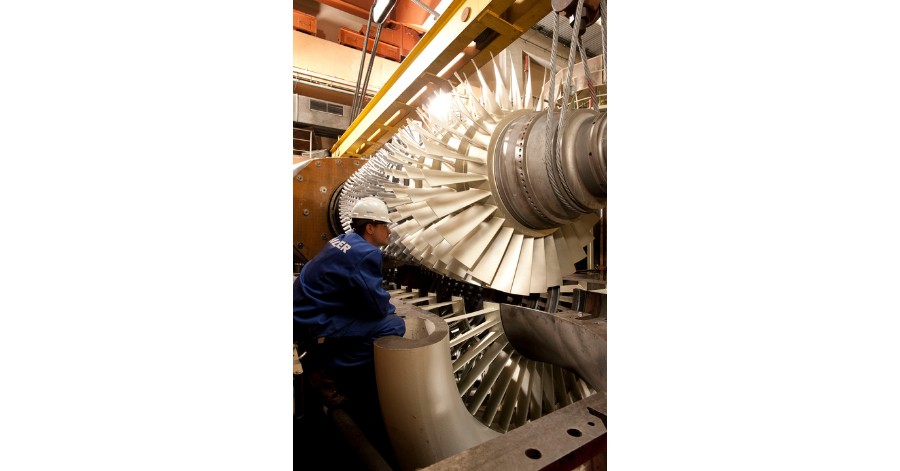
Expert on-site support ensures overhaul projects are delivered on time
Latest repair technologies
Modern third generation gas turbines use sophisticated designs and advanced technology components that require new inspection procedures, welding techniques, coating materials and tooling to restore hot gas path components to a safe and serviceable condition.
The use of higher turbine inlet temperatures over 2’300 °F (1’300 °C) to achieve increased power output has led to the use of single-crystal (SX) materials in turbine blades. Unless the facility being used to maintain the turbine has the capabilities to repair these blades, they need to be replaced at every major overhaul after 24’000 operating hours. For example, Sulzer has developed advanced repair techniques that enables SX blades to be refurbished to an as-new condition, offering operators a substantial saving in maintenance costs.
As a leading specialist in the maintenance and repair of gas turbine machinery, Sulzer has extensive in-house expertise and manufacturing facilities that enable operators to optimize the performance and availability of their assets. By working with experienced design engineers and field service staff, gas turbine operators have an opportunity to benefit from independent maintenance support delivered within exacting timeframes.
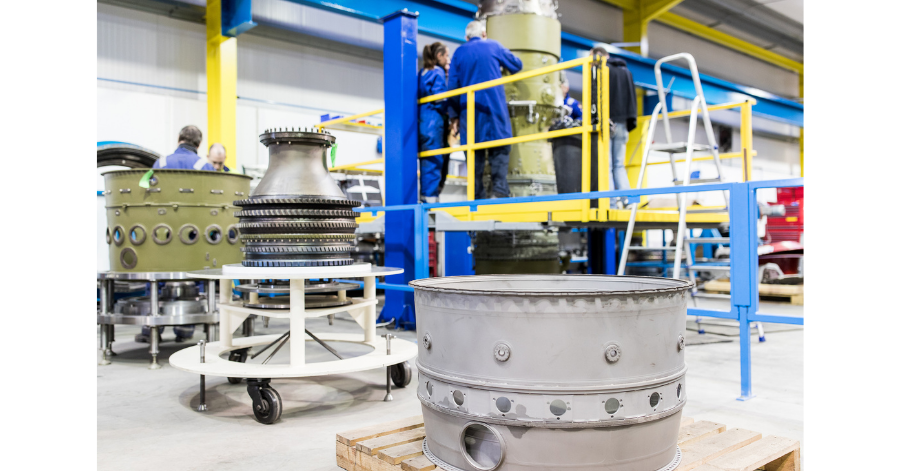
Aero-derivative turbines offer compact power solutions
About Sulzer
Sulzer is a global leader in fluid engineering. We specialize in pumping, agitation, mixing, separation, and application technologies for fluids of all types. Our customers benefit from our commitment to innovation, performance, and quality and from our responsive network of 180 world-class production facilities and service centers across the globe. Sulzer has been headquartered in Winterthur, Switzerland, since 1834. In 2020, our 15’000 employees delivered revenues of CHF 3.3 billion. Our shares are traded on the SIX Swiss Exchange (SIX: SUN). www.sulzer.com. The Pumps Equipment division specializes in pumping solutions specifically engineered for the processes of our customers. We provide pumps, agitators, compressors, grinders, and screens developed through intensive research and development in fluid dynamics and advanced materials. We are a market leader in pumping solutions for water, oil and gas, power, chemicals, and most industrial segments.
Throughout the Americas, Sulzer provides cutting-edge parts as well as maintenance and repair solutions for pumps, turbines, compressors, motors, and generators. We service our own original equipment as well as third-party rotating equipment operated by our customers. Our technology-based solutions maximize reliability and lifecycle cost-effectiveness.
For more information on Sulzer, visit www.sulzer.com

